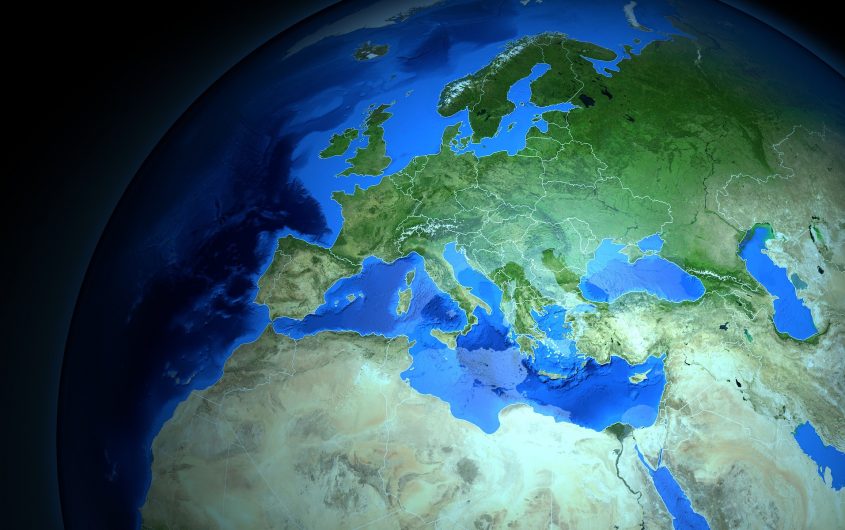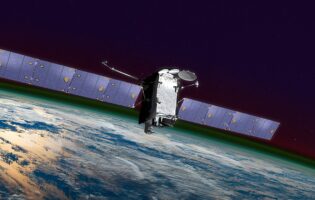
Geopolitics in the Trump Era: The Dual Challenge of Russia and China for Europe and the Need for a New Containment Strategy

Dieter Dettke
Georgetown University
Dr. Dieter Dettke is a Non-Resident Fellow at AICGS and Adjunct Professor at Georgetown University.
Dr. Dettke served as the U.S. Representative and Executive Director of the Friedrich Ebert Foundation in Washington from 1985 until 2006 managing a comprehensive program of transatlantic cooperation. In 2006, he joined the German Marshall Fund of the United States as a Transatlantic Fellow and from September 2006 to June 2007, he was a Fellow at the Woodrow Wilson International Center for Scholars. His most recent book is “Germany Says ‘No’: The Iraq War and the Future of German Foreign and Security Policy,” published by theWoodrow Wilson Center Press and The Johns Hopkins University Press, Washington, DC, and Baltimore, 2009.
Dr. Dettke is a foreign and security policy specialist, author and editor of numerous publications on German, European, and U.S. foreign and security issues.
He studied Law and Political Science in Bonn and Berlin, Germany, and Strasbourg, France and was a Fulbright Scholar at the University of Washington in Seattle in 1967/68.
Europe faces a serious new security dilemma. With the cancellation of the INF Treaty as a result of Russia’s treaty-violating nuclear build-up and modernization, Europe is now more than ever exposed to Russian nuclear and conventional threats. Exacerbating Europe’s security dilemma is a combination of continuous European military weakness, a nationalist turn of American foreign policy at the expense of multilateral institutions, and a growing presence of China in Europe. These developments are enormous challenges for the Atlantic Alliance as well as for the European Union. They take place at a time when China and Russia appear to be enlarging their influence in Europe—China primarily on an economic level and Russia militarily as well as based on its energy resources and growing soft power. This calls for a new strategy of containment.[1]
In the case of Russia, there are also political grievances resulting from the demise of the Soviet Empire, territorial losses, and the shock this has caused for the Russian national consciousness. In President Vladimir Putin’s view, these developments amounted to the greatest geopolitical catastrophe of the twentieth century. All this happened while the Atlantic Alliance remained united after the end of the Cold War, contrary to the fate of the Warsaw Pact which—like the Soviet Empire—also collapsed. NATO and the EU even kept enlarging, taking in former Soviet Republics as well as Warsaw Pact member states, making NATO and the EU immediate neighbors of Russia. As a result, new tensions with Russia emerged, and it is no surprise that after the peaceful end of the East-West conflict, the West ended up on a collision course with a resurgent Russia.
The Heartland Theory
Geographer Halford Mackinder’s Heartland theory not only helps to understand America’s engagement in Europe after World War II. It is also useful to grasp the monumental developments at the end of the Cold War, in particular its dramatic impact on Russia. Most importantly, it helps explain the return of Russia as a great power since the beginning of the twenty-first century.
Who rules East Europe commands the Heartland: Who rules the Heartland commands the World-Island: Who rules the World-Island commands the World.
First developed in an article “The Geographical Pivot of History,” the Heartland theory suggests that “Who rules East Europe commands the Heartland: Who rules the Heartland commands the World-Island: Who rules the World-Island commands the World.”[2]
The geopolitical thinking of Mackinder provided the critical background and convincing argument for the United States to take on a leadership role in the fight against the political and military threat that Hitler’s aggressive policies posed for Europe and the entire world. Had Nazi Germany, after invading France and threatening Great Britain, also defeated the Soviet Union, the control of the vast resources of the Heartland—basically the continental space between the waters of the North Atlantic in the west and the Pacific coast in the east—could have led to the domination of a totalitarian land power. By definition, this would then also have posed a fatal threat for the United States as a sea power on the other side of the Atlantic.
The important geostrategic insight of the American political leadership at the time was that the Atlantic could no longer be the dividing line between East and West. America’s security became inextricably linked with the fate of the Heartland not only as an offshore balancer, but with a physical presence in Europe in its own security interest. The result was America’s containment strategy designed by George F. Kennan with the objective to bring about, primarily with political means, either “the break-up or the gradual mellowing of Soviet power.”[3] As tempting as the idea of reducing the role of the United States to offshore balancing might sound for scholars of the realist school, today the long-term consequences could be catastrophic. Once influence-seeking strategies such as the Russian and Chinese variations succeed, it is difficult—if not even impossible—to reverse trends without restoring an effective balance of power in the Heartland.
After the end of the Cold War and with the emergence of a multipolar international order characterized by great power competition and growing uncertainty, if not even system instability, Mackinder’s Heartland theory is no less important. The theory is not only a geographic concept. The importance of the Eurasian landmass—its vast resources as well as its political, economic, and military potential—is obvious and self-evident. More important, as anticipated by Mackinder, is the role of an organizer,[4] a power with controlling political, economic, and military influence over the entire Heartland. This is what Nazi Germany tried to achieve and what the Soviet Union came close to achieving had the U.S. not put together a “whole of government”—and also a “whole of society”—effort of containment, including a firm military presence in Europe.
The Weight of Russia and China in the Heartland
Russia, and in particular China, with their models of state capitalism clearly strive to offer to the rest of the world an alternative model to Western market principles and democracy. Together, China and Russia bring substantial economic and military power to the table. Their cooperation with the objective to “present a counterweight to the United States and other Western countries”[5] keeps growing and creates a fundamental challenge for NATO as well as for the EU.
Russia, although economically weaker, possesses strong military capabilities, in particular its powerful nuclear arsenal. The country maintains escalation dominance in key conflict areas in its near abroad. This is painfully true in Ukraine, particularly with the annexation of Crimea, as well as in the many frozen conflicts in Russia’s neighborhood such as Georgia, Moldova, and Azerbaijan.
Based on its energy resources, Russia holds sway over large parts of eastern Europe and the western Balkans, competing ferociously with the European Union in an effort to undermine the EU enlargement strategy and to prevent eastern European countries and the western Balkan states from joining NATO. Unfortunately, even the combined military assets of the EU do not measure up to Russian military forces, not to mention Russia’s geostrategic advantages as well as its soft power based on cultural affinities and media influence. A Common European Security and Defense Policy, as Jolyon Howorth put it, is still “a work in progress,” not to mention a European Army worthy of such a name.[6]
With its Belt and Road Initiative (BRI), China already has a global strategic concept based on infrastructure development, putting the country in a position to project economic as well as political power with potential military consequences. The BRI already reaches deep into the Heartland and is developing a substantial economic and potentially political presence in Europe both east and west, including within member states of the European Union. With the Sixteen plus One concept, China is trying to foster infrastructure cooperation with sixteen eastern and central European countries, including eleven EU member states. China’s outreach also serves as a platform for implementation of the global Belt and Road Initiative. Although advertised as a peaceful design, the consequences for Europe are not only benign.[7] Financial dependency is one issue. More important is the fact that EU decision-making on China with regard to trade and investment, as well as foreign and security policy, will be more difficult, undermining EU consensus building.
China is now on its way to establishing itself not only as a regional hegemon, but also as a global power. Already the second most important economic power, China keeps enlarging its military capabilities on land, at sea, as well as in the air and in space. With regard to space exploitation—demonstrated with the landing on the dark side of the moon—China appears to be a global leader relying on its powerful scientific infrastructure.
Conclusion
The Russian and Chinese authoritarian model of governance is already receiving support in eastern Europe where an illiberal political system is gaining attraction (as in Hungary and Poland), weakening the EU from inside. Ironically, the Trump administration’s turn to a distinct national foreign policy at the expense of existing multilateral institutions, such as NATO and the EU, as well as economic and trade organizations such as the WTO, as instruments of cooperation,[8] could well play into the hands of Russia and China. The result would be a weakening of transatlantic ties. So far, these ties helped create the necessary balance to prevent a dominating influence of Russia and China in the Heartland. The danger now is that, as a result of the emerging collaborative power arrangement between the two rival powers of the United States, their influence will grow substantially. In addition, the Trump administration’s trade policy as well as the use of secondary trade sanctions create uncertainty with regard to market access to the United States, accelerating the geopolitical shifts that appear to be in the making.
Simple economic rules of thumb suggest that markets that are lost will not return. Once driven out of U.S. markets and turning to China, Russia, Japan, and other countries, transatlantic trade and economic cooperation will decline. With a population of more than a billion, China is not only a powerful export champion, correctly accused of mercantilism; it is also a very attractive export destination offering promising growth prospects for Europe. Without a push back, Europe could be drawn into the orbit of China and Russia hoping for mutual benefits with stronger economic ties in spite of crucial issues with regard to copyrights and fair and mutual market access rules and regulations. What appears to be necessary now is a renewed containment strategy[9] as a political project based on a firm U.S. commitment for NATO as well as a more proactive EU security and defense policy in combination with a more dynamic enlargement strategy. Whether it will work, however, is unfortunately an open question.
[1] On the need for a renewed containment strategy see Michael Mandelbaum, “The New Containment. Handling Russia, China and Iran,” Foreign Affairs, March/April 2019, Vol. 98, Number 2, p. 123- 131.
[2] Halford Mackinder, Democratic Ideals and Reality (Washington, DC: National Defense University, Copyright of the 1942 edition), quoted by Stephen V. Mladineo, Introduction page XVIII, available at https://www.files.ethz.ch/isn/139619/1942_democratic_ideals_reality.pdf
[3] See Mr. X, (George F. Kennan), “The Sources of Soviet Conduct,” Foreign Affairs, Vol. 25, No. 4, July 1947, p. 582.
[4] Halford Mackinder, “The Geographical Pivot of History,” in Democratic Ideals and Reality, op.cit., page 192. See footnote 2.
[5] See the Statement for the Record by Daniel R. Coats, Director of National Intelligence before the Senate Select Committee on Intelligence on the Worldwide Threat Assessment of the US Intelligence Community, January 29, 2019.
[6] Jolyon Howorth, Security and Defense Policy in the European Union (New York: Palgrave Macmillan, 2007/ 2014), Introduction.
[7] See Andrew Witthoeft, “What is China’s Objective with the 2018 16+1 Summit?” The Diplomat, June 8, 2018.
[8] See the Speech by Secretary of State Michael R. Pompeo in Brussels, December 4, 2018.
[9] See Michael Mandelbaum, “The New Containment. Handling Russia, China and Iran,” Foreign Affairs, March/April 2019, footnote 1.








